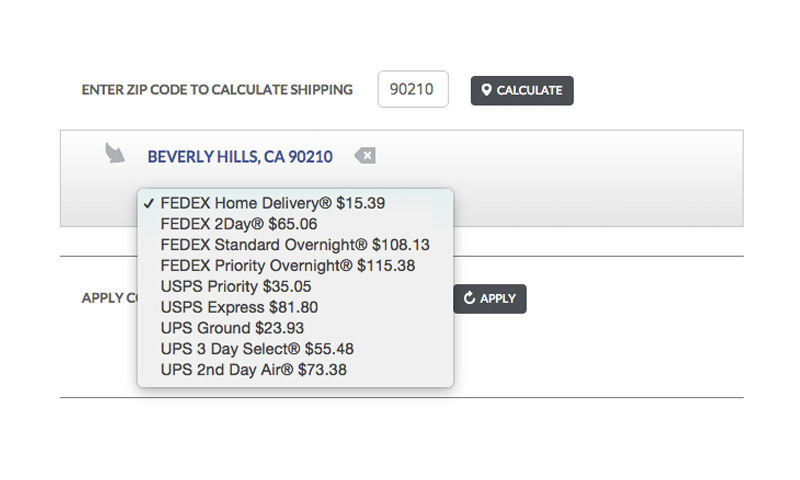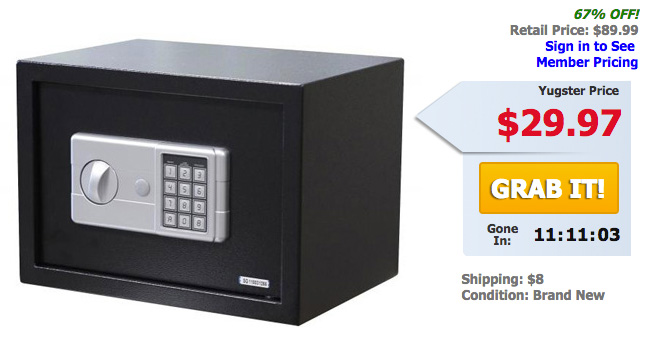
Shipping and handling costs matter, both to you and to your customers. The money spent shipping your orders, both in the time spent processing them and in the actual postage paid, will affect your margins and ultimately your bottom line. However, the wrong shipping rate strategy can adversely affect your sales and your profitability. Learn how to choose the right strategy for offering the right shipping rate for your store:
High shipping and handling costs is the most common reason customers abandon their shopping carts
Your customers pay attention to how much they’re paying for shipping. They’ve become increasingly accustomed to free shipping offers (though that will vary between markets), and will often abandon a transaction if they feel the shipping cost is too high. High shipping and handling costs is the most common reason customers abandon their shopping carts, according to surveys of online retail shoppers.
Fortunately, there are several common ways to charge for shipping and handling without breaking the bank and without scaring your customers away. The best choice for your needs will depend on, well, your needs, as well as the trends in your niche, such as the shipping policies for your top competitors.
Free Shipping Pays Off

Most store owners wouldn’t consider free shipping when first starting their business. Without charging the customer for shipping, you would be forced to take that cost out of your profit margin for every item sold. It’s understandable that taking that hit would be a tough pill to swallow.
Offering free shipping can stop up to 60% of abandoned carts
However, free shipping can be a very effective marketing tool and sales driver. Offering free shipping on all domestic orders, or for orders over a certain amount, will appeal to all of your site visitors, especially if this is something your competitors don’t advertise. Forrester Research found that offering free shipping can stop up to 60% of abandoned carts. If free shipping is the norm in your particular niche, not offering it will likely hurt your profits way more than the cost of postage.
Free shipping doesn’t have to be expensive. It doesn’t have to bite into your margins and make growth any harder. The trick to free shipping is that it typically doesn’t need to be very fast — if a customer isn’t paying for shipping, they tend not to mind if it takes up to 7 business days to arrive. With that in mind, shipping methods like USPS Parcel Select or Standard Post can help save on cost while still providing quality shipping service free of charge to your buyers.
Real-Time Quotes are a Win-Win

If free shipping isn’t ideal for your needs, another effective shipping rate strategy would be to offer real-time postage quotes directly from your carriers. With this system, customers would be presented a shipping rate based on the size and weight of the items ordered and the address that they’ll be shipped to. These rate quotes reflect the retail postage price from the selected service provider.
Customers will never over- or under-pay for shipping
Real-time quotes are a great choice because they are fair for everyone involved. As long as everything is configured correctly, customers will never over- or under-pay for shipping. This allows sellers to provide a fair rate to customers both domestic and international without having to worry about a complicated formula to cover those variables.
Most shopping cart platforms will offer real-time shipping quotes, either out of the box or as a plugin or extension. You can activate rate calculation for any or all of the shipping providers that you want to work with, and many plugins allow you to offer shipping add-ons like insurance and signature confirmation.
Flat Rates Keep Things Simple

Many stores sell a very limited catalog, or a catalog made up of very similar items. If most of your orders ship in the same parcel size, you may not benefit from the complexity of real-time quote calculations for each order. You also don’t want to risk scaring off customers by quoting shipping that is too expensive in relation to the items being purchased. In these scenarios, you might consider simply charging a flat shipping and handling rate per item or per order.
Flat rate shipping eliminates the head-scratching that customers might experience
Flat rate shipping eliminates the head-scratching that customers might experience if they were dealing with a rate table or real-time carrier quote. They know what they’ll have to pay every time they place an order. This benefits repeat customers and helps make shipping revenue and margins predictable for the seller. If you’re shipping using USPS flat rate methods, you can control your actual costs much in the same way that you’re controlling what you charge your buyers.
To help come up with an effective flat rate, try averaging out your shipping and handling costs to see what you tend to pay per order. Consider if you need to charge more for certain items or for orders with unusually high item quantities. Remember that the cost to ship each item generally decreases when an order features multiple items that will fit in the same package. This means that it usually isn’t necessary to charge a flat rate per item.
Ditch Complicated Strategies
Too many stores rely on shipping rate tables: data sets that calculate a rate based on the size or the value of the order and where it’s headed, without checking the rate with the carrier. This is often a manually maintained affair that burdens the store owner and risks presenting inaccurate quotes to the buyer.
Table rates benefit no one; not the seller, not the buyer
In the vast majority of e-commerce environments, table rates benefit no one; not the seller, not the buyer. They are, at best, a relic from an older time in e-commerce software, when carrier rate APIs were too slow or technically involved for many stores to use. Due to their static nature, table rates often overcharge or undercharge buyers depending on where they’re ordering from or what their order contains. Store owners also have to update their table rates annually (if not more frequently) to accommodate changes in shipping costs.
Summing Up
If you can offer free shipping, you should try it. It can attract more sales than you need to make up the cost of shipping, and it can put you at a competitive advantage in your niche. If free shipping isn’t an option, skip the table rates or similar manual methods. Instead, set up a carrier rate calculator or just offer a reasonable flat fee that’s fair to you and to your customers.
If shipping costs and speed are a concern, consider expanding your fulfillment methods. A common strategy is to ship slow and cheap methods out of your home facility while using third-party distribution centers to handle more urgent deliveries. This setup will allow you to get each order where it needs to go within the time promised to your customers without breaking the bank.
